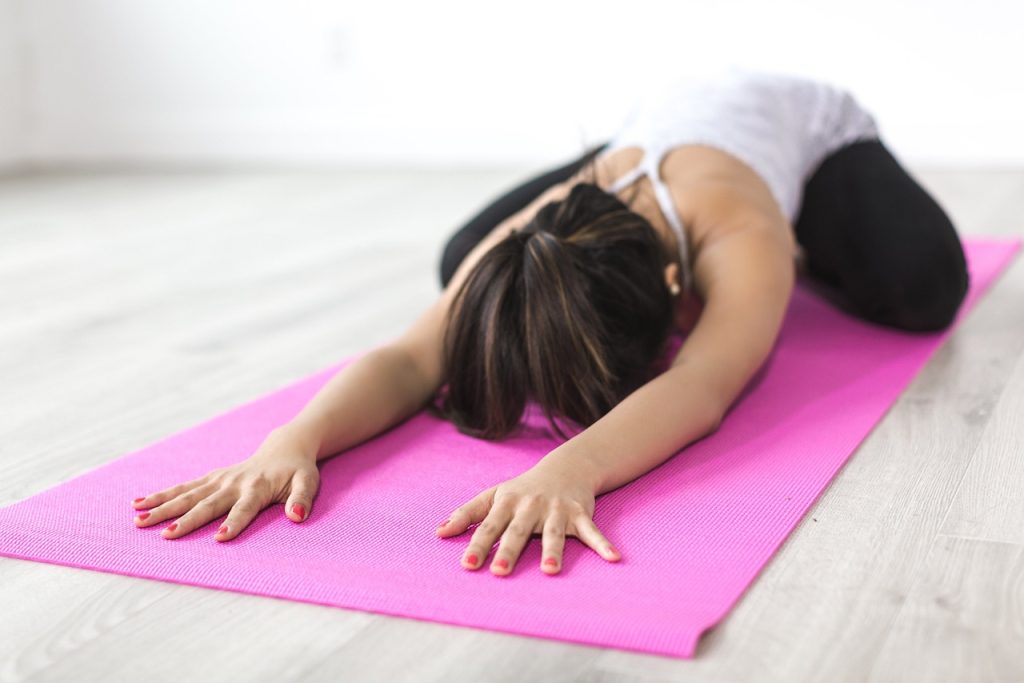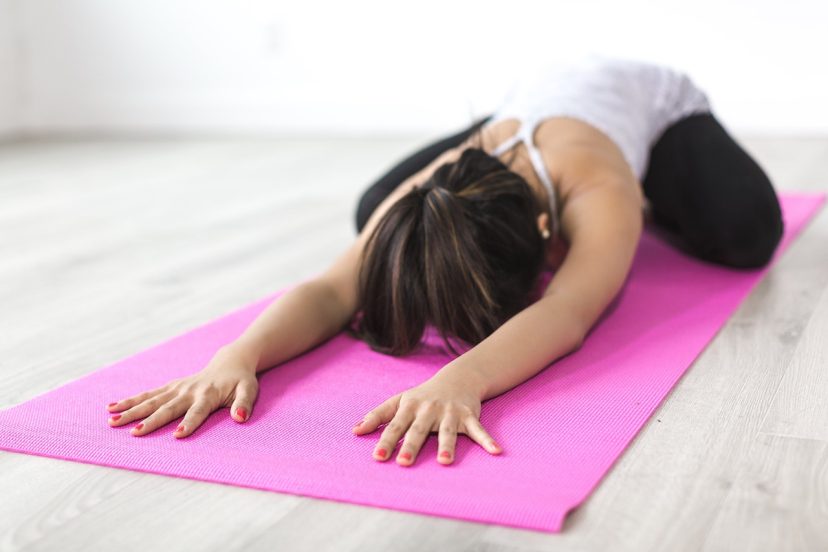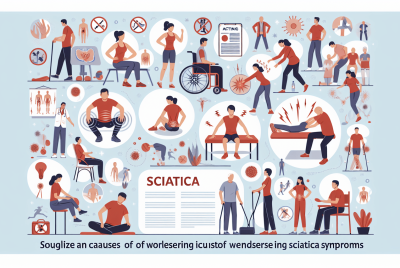Is Yoga Effective For Back Pain Relief?
If you have been struggling with back pain and are looking for a natural and holistic way to find relief, you may have heard of the ancient practice of yoga. Yoga has gained immense popularity in recent years, and many people swear by its ability to alleviate various physical ailments, including back pain. In this article, we will explore the effectiveness of yoga for back pain relief and whether it is a viable option worth considering. So, if you’ve been wondering if yoga can truly provide relief for your back pain, read on to find out more.

Benefits of Yoga for Back Pain Relief
Improved Flexibility and Strength
Yoga is known for its ability to improve flexibility and strength, and these benefits can be particularly helpful for individuals dealing with back pain. By practicing various yoga poses, you can increase the flexibility of your muscles, ligaments, and tendons, allowing for greater range of motion and reducing stiffness. Additionally, yoga poses that target the back and core muscles can help to strengthen these areas, providing better support for the spine and reducing the risk of future pain.
Reduced Inflammation and Muscle Tension
Back pain often accompanies inflammation and muscle tension, which can make everyday activities a challenge. Yoga has been shown to have anti-inflammatory effects, helping to reduce swelling in the affected areas and alleviate pain. The gentle stretching and relaxation techniques used in yoga can also promote the release of tension in the muscles, providing relief and allowing for improved mobility.
Enhanced Posture and Alignment
Poor posture and alignment are common contributors to back pain, and yoga can help to address these issues. Through the practice of yoga, you can improve your body awareness and learn how to properly align your spine, pelvis, and shoulders. By correcting postural imbalances and maintaining a more aligned position, you can relieve stress on the back and prevent further pain and discomfort.
Types of Yoga for Back Pain
Hatha Yoga
Hatha yoga is a gentle form of yoga that focuses on breath control and basic poses. It is a great option for individuals with back pain as it emphasizes slow and controlled movements, allowing for increased awareness of the body’s limitations. Hatha yoga is suitable for individuals of all fitness levels and can be easily modified to accommodate specific back concerns.
Iyengar Yoga
Iyengar yoga is a style of yoga that focuses on precision and alignment. It uses props such as blocks, straps, and blankets to assist in achieving proper alignment and avoid strain or injury. This style of yoga can be particularly beneficial for individuals with back pain as it provides extra support during poses and allows for adjustments based on individual needs.
Viniyoga
Viniyoga is a therapeutic form of yoga that adapts the practice to each individual’s needs and abilities. With a focus on breath and movement coordination, Viniyoga helps individuals with back pain to cultivate body awareness and develop a customized practice that suits their specific condition. It emphasizes gentle movement and encourages modifications to accommodate limitations or pain.
Yoga Poses for Back Pain Relief
Child’s Pose (Balasana)
Child’s Pose is a gentle resting pose that stretches the lower back, hips, and thighs. To perform this pose, start on your hands and knees and slowly sit your hips back towards your heels. Extend your arms forward and relax your forehead on the mat. Take slow, deep breaths and allow your body to relax into the stretch. Child’s Pose releases tension in the lower back and can provide relief for individuals with back pain.
Cat-Cow Pose (Marjaryasana-Bitilasana)
Cat-Cow Pose is a dynamic movement that helps to improve spinal flexibility and relieve tension in the back and neck. Start on your hands and knees with your wrists directly below your shoulders and your knees hip-width apart. On an inhale, arch your spine and look up towards the ceiling (Cow Pose). On an exhale, round your back, tucking your chin towards your chest (Cat Pose). Repeat this flow several times, moving with your breath. Cat-Cow Pose gently mobilizes the spine and promotes a healthy range of motion.
Downward Facing Dog (Adho Mukha Svanasana)
Downward Facing Dog is a foundational yoga pose that offers a deep stretch for the entire body, including the back, hamstrings, and calves. Begin on your hands and knees, tuck your toes under, and lift your hips up towards the ceiling. Press your hands firmly into the mat and extend your heels down towards the ground. Keep a slight bend in your knees if needed. Hold this pose for several breaths, focusing on lengthening your spine and relaxing your neck. Downward Facing Dog helps to release tension in the back and increase overall flexibility.
Principles for Practicing Yoga with Back Pain
Listen to Your Body
When practicing yoga with back pain, it is essential to listen to your body’s signals and honor its limits. Pay attention to any sensations of discomfort or pain and modify or skip poses as needed. It’s important to find a balance between challenging yourself and avoiding injury. By tuning in and being mindful of your body, you can prevent further damage and promote healing.
Modify Poses as Needed
Not all yoga poses are suitable for individuals with back pain, and it’s important to modify them as necessary. Use props such as blankets, blocks, or straps to support your body and ensure proper alignment. For example, you can use a block under your lower back in Bridge Pose to reduce strain on the spine. Modifying poses allows you to experience the benefits of yoga while keeping your back safe and protected.
Focus on Engaging Core Muscles
Strengthening the core muscles is crucial for back pain relief, as it provides stability and support for the spine. Pay attention to engaging your core muscles throughout your yoga practice, especially during poses that involve bending or stretching the spine. By activating the deep muscles of your abdomen and lower back, you can protect your spine and reduce the risk of further pain or injury.

Risks and Precautions of Yoga for Back Pain
Consultation with a Healthcare Provider
Before starting a yoga practice for back pain relief, it is advisable to consult with a healthcare provider, especially if you have a pre-existing condition or have recently experienced a severe injury. They can provide personalized advice and guidance based on your individual circumstances and may recommend specific modifications or precautions to take during your practice.
Avoid Overexertion
While yoga can be a beneficial tool for back pain relief, it’s important not to overexert yourself. Pushing your body beyond its limits can lead to further injury or aggravate existing pain. Listen to your body’s cues and take breaks when needed. Remember that progress in your practice is gradual, and it’s more important to prioritize safety and self-care.
Avoid Certain Poses
Some yoga poses may not be suitable for individuals with back pain or certain back conditions. Poses that involve deep spinal twists or extreme backbends can put excessive stress on the spine and may worsen your pain. If a pose causes discomfort or feels unsafe, it’s best to avoid it or modify it to better suit your needs. Your healthcare provider or a qualified yoga instructor can help guide you in choosing appropriate poses for your specific back concerns.
Scientific Evidence on Yoga for Back Pain Relief
Research Studies on Yoga and Back Pain
Numerous research studies have been conducted to investigate the effectiveness of yoga for back pain relief. These studies have consistently shown positive outcomes, including reduced pain intensity, improved functional ability, and increased quality of life. The results suggest that regular yoga practice can be an effective complementary therapy for managing back pain.
Meta-Analyses and Systematic Reviews
Meta-analyses and systematic reviews, which involve the analysis of multiple studies, have also supported the efficacy of yoga for back pain relief. These comprehensive reviews of the existing literature have found that yoga is associated with significant reductions in pain and disability, as well as improvements in physical function and psychological well-being. The evidence further highlights the potential of yoga as a safe and non-invasive approach to address back pain.
Comparison to Other Treatment Options
When compared to other treatment options for back pain, such as medication or physical therapy, yoga has been found to be equally or more effective in improving pain and functional outcomes. Additionally, yoga offers the advantage of being a holistic practice that addresses not only physical aspects but also promotes relaxation, stress reduction, and overall well-being.

Real-Life Testimonials on Yoga for Back Pain Relief
Personal Stories of Back Pain Improvement through Yoga
Many individuals have shared their personal experiences of finding relief from back pain through practicing yoga. These stories often highlight the transformative power of yoga in managing and even overcoming chronic pain. From improved mobility and reduced reliance on pain medications to restored confidence and enhanced quality of life, these testimonials serve as inspiring anecdotes that offer hope to others struggling with back pain.
Positive Feedback from Yoga Practitioners
Yoga practitioners and instructors frequently highlight the positive impact yoga has had on their own back health. They often speak of increased body awareness, better posture, and improved strength and flexibility as a result of their regular yoga practice. Feedback from these individuals further emphasizes the potential of yoga as a valuable tool for back pain relief.
Combining Yoga with Other Therapies for Back Pain Relief
Physical Therapy
Combining yoga with physical therapy can provide comprehensive care for back pain. Physical therapy focuses on specific exercises and techniques to restore mobility and functionality, while yoga complements this approach by offering a holistic practice that addresses not only physical aspects but also mental and emotional well-being. Working with both a physical therapist and a qualified yoga instructor can provide a well-rounded approach to back pain management.
Chiropractic Care
Chiropractic care aims to align the spine and improve overall musculoskeletal health. When combined with yoga, individuals experiencing back pain can experience enhanced benefits. Chiropractic adjustments can help to alleviate any joint restrictions or misalignments, allowing for better movement during yoga practice. Similarly, the increased flexibility and strength gained from yoga can provide longer-lasting results from chiropractic adjustments.
Massage Therapy
Massage therapy is a widely used complementary therapy for back pain relief, and its benefits can be enhanced when combined with yoga. Yoga helps to stretch and relax the muscles, making them more receptive to massage techniques. Massage therapy can also pinpoint areas of tension or tightness that may require additional attention during yoga practice. Combining these two therapies can provide a synergistic effect, promoting relaxation, pain relief, and improved muscle function.
Creating a Yoga Practice for Back Pain Relief
Finding a Qualified Yoga Instructor
When dealing with back pain, it is important to find a qualified yoga instructor who has experience working with individuals with similar concerns. Look for instructors who have specific training in therapeutic or restorative yoga, as they will be knowledgeable about modifications and techniques tailored to back pain relief. A qualified instructor can guide you through a safe and effective practice, minimizing the risk of exacerbating your pain.
Creating a Gentle and Gradual Routine
Start your yoga practice for back pain relief with gentle and simple poses. Focus on proper alignment and listen to your body’s response. As you build strength and confidence, gradually incorporate more challenging poses or sequences. It is essential to progress at your own pace and avoid pushing yourself too hard. By approaching your practice with patience and respect for your body’s limitations, you can gradually improve your back pain and prevent future flare-ups.
Maintaining Consistency and Regularity
Consistency is key when using yoga for back pain relief. Aim for a regular practice, ideally two to three times per week, to see the best results. Consistency allows your body to adapt to the movements and poses, increasing your flexibility, strength, and overall well-being. Set aside dedicated time for your yoga practice, and make it a priority in your schedule. With regularity, you can harness the full benefits of yoga for back pain relief.
Conclusion
Yoga offers a multitude of benefits for individuals experiencing back pain. From improved flexibility and strength to reduced inflammation and enhanced posture, yoga provides a holistic approach to managing and relieving back pain. With various types of yoga available, including Hatha, Iyengar, and Viniyoga, individuals can find a practice that suits their needs and individual circumstances. By incorporating specific yoga poses, listening to the body, and focusing on core engagement, individuals can experience relief from back pain and promote their overall well-being. Furthermore, scientific evidence, real-life testimonials, and the combination of yoga with other therapies such as physical therapy, chiropractic care, and massage therapy, further emphasize the effectiveness of yoga as a complementary approach to back pain relief. By creating a yoga practice tailored to back pain relief, individuals can find lasting benefits and improve their quality of life.




